We seem to have brought the rainy La Paz weather with us. Our early morning bus trip proceeded fairly smoothly although we were a bit late setting off, having to collect several bleary eyed young travellers from their hostels on the way. As usual, there were several buses making the same journey, all departing at the same time, stopping together at the same petrol station cafe on the way and arriving at the same time.
The journey was interesting because, although we were pretty high all the way, it was very different from our previous journeys. Here the valleys are wide but relatively fertile with green in every direction. Small squares of crops cover the ground and groups of animals are being kept, including cows, sheep and pigs as well as the inevitable llamas.
We caught our first sight of Lake Titicaca and were amazed at the size but then realised from the map that we were looking at the small bit; the lake edges are convulated with many narrow straits leading to smaller lakes that remain a part of the whole.
We crossed one such strait where the bus went over on one boat while we had to travel over on smaller boats, rejoining at the far side. As we finally made our descent into Copacabana heavy rain began and we trundled our cases down into the main town, stopping at the first moderately priced hostel, on the corner of the main square.
The main square shows the extent to which Copacabana is geared up to travellers. The roads are filled with taxis, minivans and buses waiting to take people on and almost every shop is a travel agent trying to sell you journeys to here there and everywhere. Of course, at the heart of all this business is the trade in boat journeys to Las Islas del Sol y de la Luna (The Sun and Moon Islands) that lay a short way off in the lake.
Other roads in this small town are filled with cafes and hostals, interspersed with craft stalls selling all manner of stuff, including much knitted from alpaca, llama etc (and some that looks pure synthetic!) Jen has now wisely kitted herself out with a range of brown knitted stuff as she is feeling the cold here.
During the days, if it is not raining, the sun does its best to warm you and can be quite pleasant. However, when night falls the temperature drops sharply but few places have any form of heating. The Bolivians are made of stern stuff (they also seem to wear a lot of warm clothing all the time). As we understand it, we are here during their summer, heaven knows what it's like in winter!
Just a short walk from our hostal brings us to the shoreline of the lake but this is not quite as we had imagined it. The costanera is a rather rough pathway although it is blessed with a number of food stalls.
On one side of the scrappy pier, innumerable pleasure boats for hire bob about in the water (despite the chilly weather we actually saw some people out in them). Many of these have swans heads on them, others are just simple canoes. On the other side of the pier are the hundreds of almost identical trip boats to take people out to the islands. Following the usual system, they all depart at the same times each day primarily for half day or whole day visits. A couple of the boats have been disguised as reed boats, in imitation of those originally sailed by the Incas. They are not completely convincing.
We took a hike a few kilometres out of town to find the Baño del Inka (Inca Baths). It was an interesting walk because on the way we were able to watch some of the local people farming the flat ground up against the lake.
They are all growing crops like Quinoa and potatoes on small squares of land, using pretty basic tools and harvesting small amounts. Interspersed among the crops there are quite a few groups of gladioli growing; the local people are particularly keen on using them in churches, for blessings and tying to buildings to bring good luck. There are also surprisingly large amounts of lupins being farmed which apparently enrich poor land, have tasty beans in the pods and the plants provide forage for the animals. What a useful plant! And we just thought they were rather old-fashioned flowers.
There are animals like pigs and sheep tethered in little groups along the way and some guys were also fishing in the lake where they can get trout and kingfish. The Inca baths however, as we had anticipated, were closed and what we could see of them was a bit underwhelming (to be fair, the guide book had said as much). So we went a little further along the lakeside before retracing our steps to the hostel.
Elsewhere in the town there are some more authentic experiences frequented almost exclusively by local people. The church is a substantial building with more than a touch of Moorish influence. It is set in a large and decoratively cobbled courtyard with chapels topped with glazed tiled domes in each corner. Behind the church is the chapel of candles, a rather dark corridor-like building which has huge troughs for people to place candles (the only lighting). At the far end is a very popular Mary, The Virgin of Copacabana.
Although it was quite atmospheric, it is probably significantly more amazing when there are more candles in place. While we were there only a few were burning and just a few families were setting out candles.
One local experience that we don’t see too often at home was the enormous queue to get gas bottles changed. The only gas available is in the sort of bottles that we might use for patio heaters and BBQs, so many hostels and even homes have several on the go that they have to wheelbarrow down every couple of days to the delivery lorry parked by the lakeside to replace.
Another quaint and curious custom here is to turn up at the church with your car, cover it with flowers and religious tokens and then pay a monk to bless the car. This takes place at 10am and at 2.30pm every day. When we went, the monk wore a jaunty baseball cap to top off his brown habit as he liberally scattered holy water over the flowers, tokens, the people and of course all parts of the car (including the engine).
Local photographers were around to record the happy moments. Just in case you don’t actually have a car, the stalls around the church sell model cars so that you can have those blessed in the hope that you will soon get one. A similar system exists to have model houses, shops, travelling bags etc all blessed. And there were plenty of takers for all aspects of the service.
Some of the participants like to cover as many bases as possible by then making the climb up the steep and irregular staicase to the top of nearby Cerro Calvario (3966m), leaving offerings at each of the stations of the cross on the way.
About halfway up, a series of small concrete altars have been created to allow some local 'holy men’ to offer prayers and ceremonies. The rituals were linked to Christian artefacts like crosses and models of the virgin but also appeared similar to those tribal rituals we have encountered in some previous places; burning herbs and other stuff to create perfumed smoke, ringing bells, chanting prayers and liberally spraying wine and water around.
Once you reach the very top of the hill there is a further series of saints to offer praise, flowers and candles to and of course some more stalls to buy your model house, car etc. For us, the best bit about getting up there was the views in all directions, particularly out over the lake, which appears to be getting bigger all the time!
Shining Lake Titicaca (when it isn't raining).
Friday, February 26, 2010
 Copacabana, La Paz, Bolivia
Copacabana, La Paz, Bolivia
Other Entries
-
69Our 'current' location
Dec 2365 days prior Corrientes, Argentinaphoto_camera24videocam 0comment 1
Corrientes, Argentinaphoto_camera24videocam 0comment 1 -
70Salta: our first sight of the Andes and our Xmas!
Dec 2563 days prior Salta, Argentinaphoto_camera35videocam 3comment 3
Salta, Argentinaphoto_camera35videocam 3comment 3 -
71Multicoloured mountains and angels with guns!
Dec 2761 days prior Humahuaca, Argentinaphoto_camera53videocam 0comment 1
Humahuaca, Argentinaphoto_camera53videocam 0comment 1 -
72Following the Train To The Clouds
Dec 2959 days prior San Antonio de los Cobres, Argentinaphoto_camera81videocam 0comment 0
San Antonio de los Cobres, Argentinaphoto_camera81videocam 0comment 0 -
73Cafayate; days of wine, icecream and waterways
Jan 0255 days prior Cafayate, Argentinaphoto_camera42videocam 0comment 3
Cafayate, Argentinaphoto_camera42videocam 0comment 3 -
74Tucumán; chilling out and getting heated!
Jan 0552 days prior San Miguel de Tucumán, Argentinaphoto_camera26videocam 0comment 1
San Miguel de Tucumán, Argentinaphoto_camera26videocam 0comment 1 -
75Like Birmingham but better!
Jan 1047 days prior Córdoba, Argentinaphoto_camera64videocam 0comment 2
Córdoba, Argentinaphoto_camera64videocam 0comment 2 -
76Wines, Bikes, Barnsley and Bernard O'Higgins
Jan 1641 days prior Mendoza, Argentinaphoto_camera45videocam 1comment 1
Mendoza, Argentinaphoto_camera45videocam 1comment 1 -
77Over the Andes to Santiago
Jan 2334 days prior Santiago, Chilephoto_camera95videocam 0comment 8
Santiago, Chilephoto_camera95videocam 0comment 8 -
78Carnival Time in Paradise Valley!
Jan 2730 days prior Valparaíso, Chilephoto_camera89videocam 0comment 6
Valparaíso, Chilephoto_camera89videocam 0comment 6 -
79City of churches, craft stalls and penguins!
Jan 3126 days prior La Serena, Chilephoto_camera55videocam 1comment 1
La Serena, Chilephoto_camera55videocam 1comment 1 -
80More Marys than you can shake a skull stick at.
Feb 0620 days prior San Pedro de Atacama, Chilephoto_camera91videocam 3comment 1
San Pedro de Atacama, Chilephoto_camera91videocam 3comment 1 -
81Mountains, lakes, salt plains & altitude sickness
Feb 0818 days prior Uyuni, Boliviaphoto_camera82videocam 1comment 5
Uyuni, Boliviaphoto_camera82videocam 1comment 5 -
82Dead people, dead trains and dead electrics!
Feb 1016 days prior Uyuni, Boliviaphoto_camera30videocam 0comment 3
Uyuni, Boliviaphoto_camera30videocam 0comment 3 -
83Let the festivities begin (but not in the convent)
Feb 1313 days prior Potosi, Boliviaphoto_camera78videocam 0comment 0
Potosi, Boliviaphoto_camera78videocam 0comment 0 -
84No sugar but lots of water and... dinosaurs!
Feb 197 days prior Sucre, Boliviaphoto_camera61videocam 0comment 5
Sucre, Boliviaphoto_camera61videocam 0comment 5 -
85Possibly the highest capital city in the world...
Feb 233 days prior La Paz, Boliviaphoto_camera89videocam 1comment 4
La Paz, Boliviaphoto_camera89videocam 1comment 4 -
86Shining Lake Titicaca (when it isn't raining).
Feb 26 Copacabana, Boliviaphoto_camera47videocam 1comment 2
Copacabana, Boliviaphoto_camera47videocam 1comment 2 -
87Despite the name, it's not always sunny here!
Feb 282 days later Isla del Sol, Boliviaphoto_camera51videocam 0comment 0
Isla del Sol, Boliviaphoto_camera51videocam 0comment 0 -
88Incas, Pre-incas and a load of willies.
Mar 057 days later Puno, Peruphoto_camera113videocam 0comment 0
Puno, Peruphoto_camera113videocam 0comment 0 -
89Road blocks, demos and a scenic journey to Cusco
Mar 068 days later Cusco, Peruphoto_camera76videocam 0comment 5
Cusco, Peruphoto_camera76videocam 0comment 5 -
90Touring the Sacred Valley
Mar 079 days later Ollantaytambo, Peruphoto_camera50videocam 0comment 8
Ollantaytambo, Peruphoto_camera50videocam 0comment 8 -
91Visiting the Inca sites around the city.
Mar 0911 days later Cusco, Peruphoto_camera46videocam 0comment 3
Cusco, Peruphoto_camera46videocam 0comment 3 -
92The White City
Mar 1618 days later Arequipa, Peruphoto_camera92videocam 0comment 2
Arequipa, Peruphoto_camera92videocam 0comment 2 -
93Strange markings at Dead Bull!
Mar 2325 days later Toro Muerto, Peruphoto_camera32videocam 0comment 0
Toro Muerto, Peruphoto_camera32videocam 0comment 0 -
94Colca Canyon 1: Snow and the Ice Maiden
Mar 2527 days later Chivay, Peruphoto_camera17videocam 0comment 2
Chivay, Peruphoto_camera17videocam 0comment 2 -
95Colca Canyon 2: Watch out, condors about!
Mar 2729 days later Cabanaconde, Peruphoto_camera56videocam 1comment 1
Cabanaconde, Peruphoto_camera56videocam 1comment 1 -
96Colca Canyon 3: Hot and Passionate
Mar 2830 days later Arequipa, Peruphoto_camera21videocam 0comment 0
Arequipa, Peruphoto_camera21videocam 0comment 0 -
97More lines and symbols but this time they're BIG!
Mar 3133 days later Nazca, Peruphoto_camera41videocam 0comment 2
Nazca, Peruphoto_camera41videocam 0comment 2 -
98Sun worshipping through the years
Apr 0437 days later Trujillo, Peruphoto_camera62videocam 0comment 2
Trujillo, Peruphoto_camera62videocam 0comment 2 -
99We go in search of GOLD!
Apr 0740 days later Chiclayo, Peruphoto_camera58videocam 0comment 4
Chiclayo, Peruphoto_camera58videocam 0comment 4 -
100Sun, surf and a very loud children's fairground
Apr 1144 days later Máncora, Peruphoto_camera22videocam 0comment 3
Máncora, Peruphoto_camera22videocam 0comment 3 -
101In search of exotic animals: we find iguanas
Apr 1346 days later Guayaquil, Ecuadorphoto_camera21videocam 0comment 1
Guayaquil, Ecuadorphoto_camera21videocam 0comment 1 -
102We arrive and dive.
Apr 1649 days later Puerto Ayora, Ecuadorphoto_camera64videocam 2comment 1
Puerto Ayora, Ecuadorphoto_camera64videocam 2comment 1 -
103We set sail, eventually.
Apr 1750 days later Bartoleme, Ecuadorphoto_camera46videocam 0comment 4
Bartoleme, Ecuadorphoto_camera46videocam 0comment 4 -
104Iguanas in all their many forms.
Apr 1851 days later Santa Fe Island, Ecuadorphoto_camera32videocam 0comment 3
Santa Fe Island, Ecuadorphoto_camera32videocam 0comment 3
Comments
2025-05-22
Comment code: Ask author if the code is blank

 Copacabana, La Paz, Bolivia
Copacabana, La Paz, Bolivia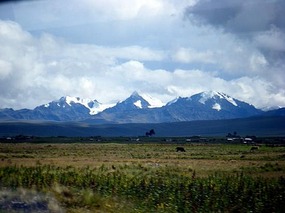
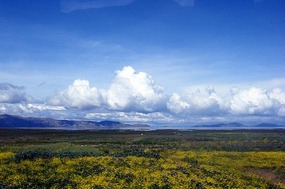
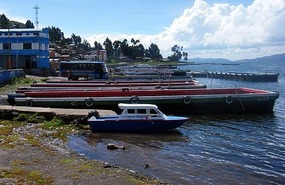
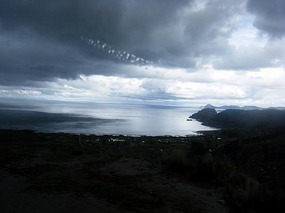
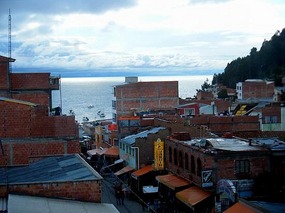
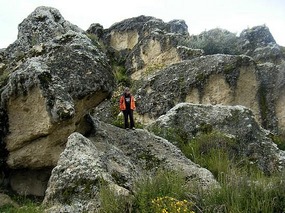
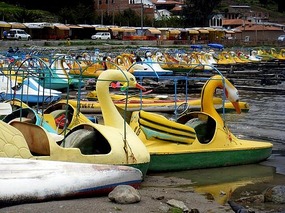
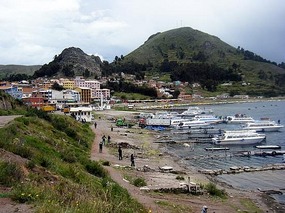
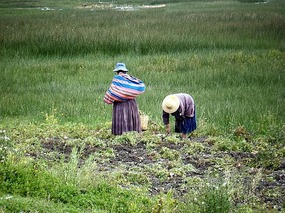
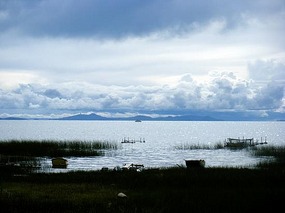
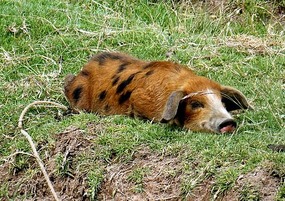
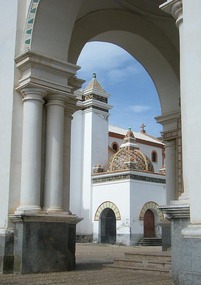

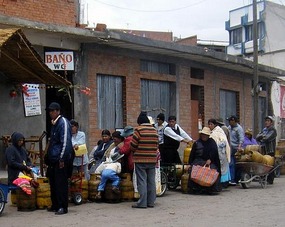
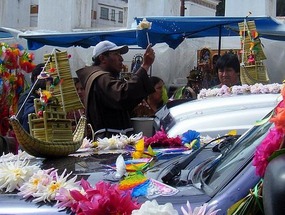
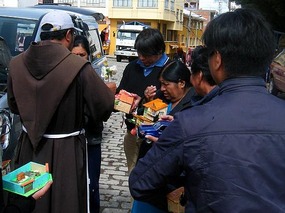

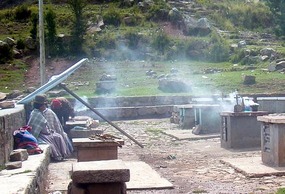
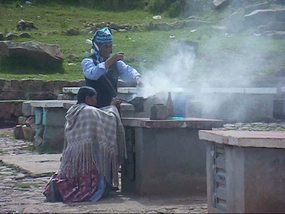







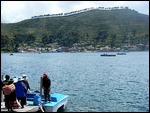
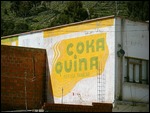

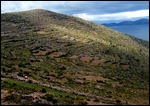
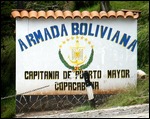
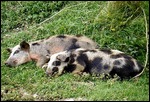
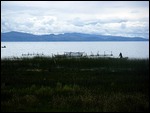
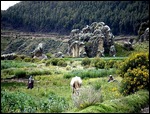
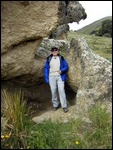
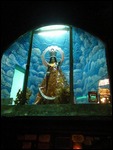
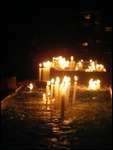
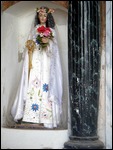
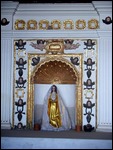
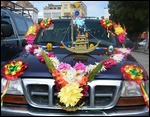
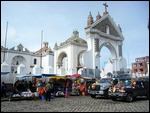
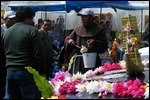
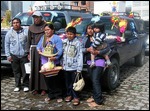
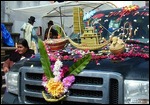
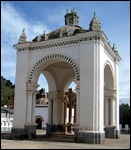
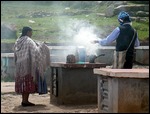
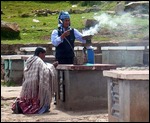
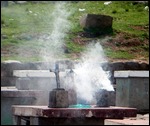
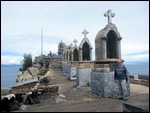
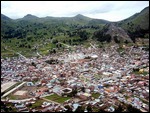
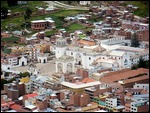
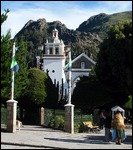
grindrodkaz
2010-03-11
Storms around Lake Titicaca, sound familiar, must by a daily thing and remember the blessing of the cars now you mention it, hope you manage to get to Macchu Picchu despite landslides, and just glad you are well away from Chile - terrible the eathquake
jenandtony
2010-03-12
Looks like Machu Picchu will be closed for the immediate future although the talk in Cusco was of the trail and the rail both opening at the beginning of April. We enjoyed Cusco a lot but can't really hang around there for three more weeks so we are heading out, to Arequipa and hence into Northern Peru and Ecuador. But, we're hoping to loop back to Cusco and MP later in the year when we head back to Lima for our flight home.